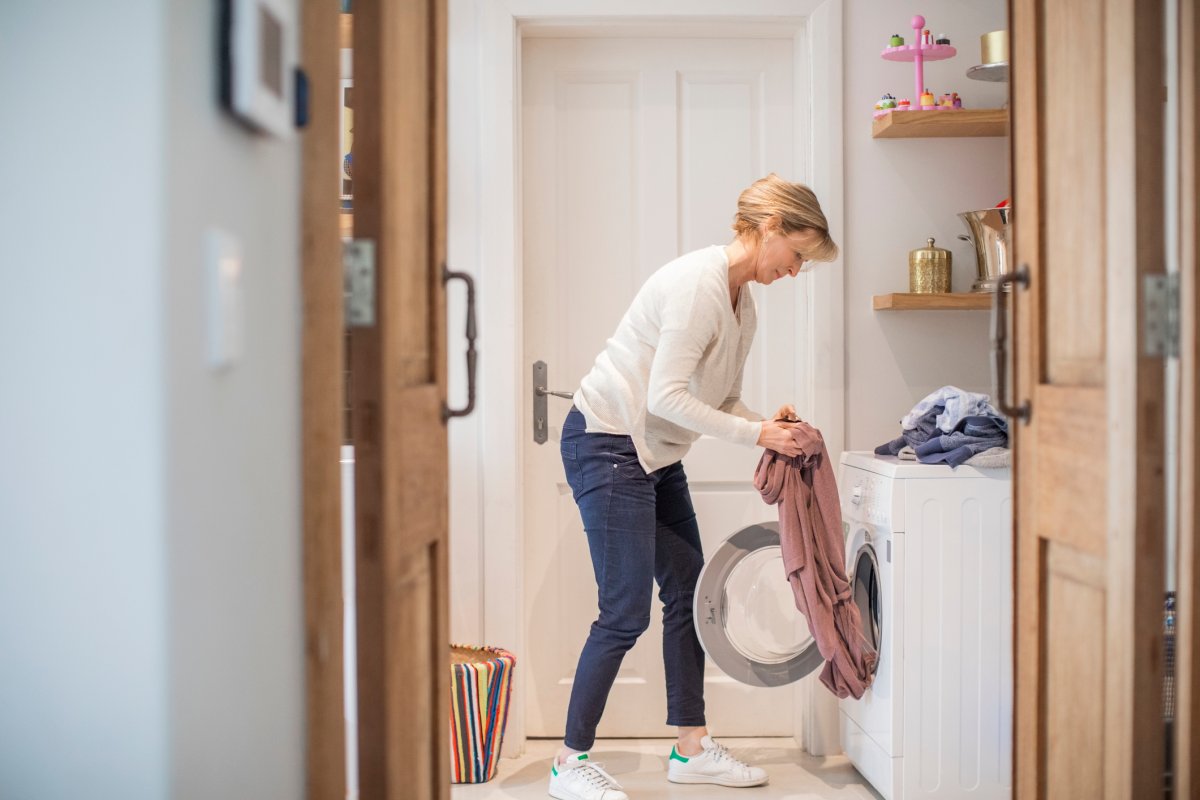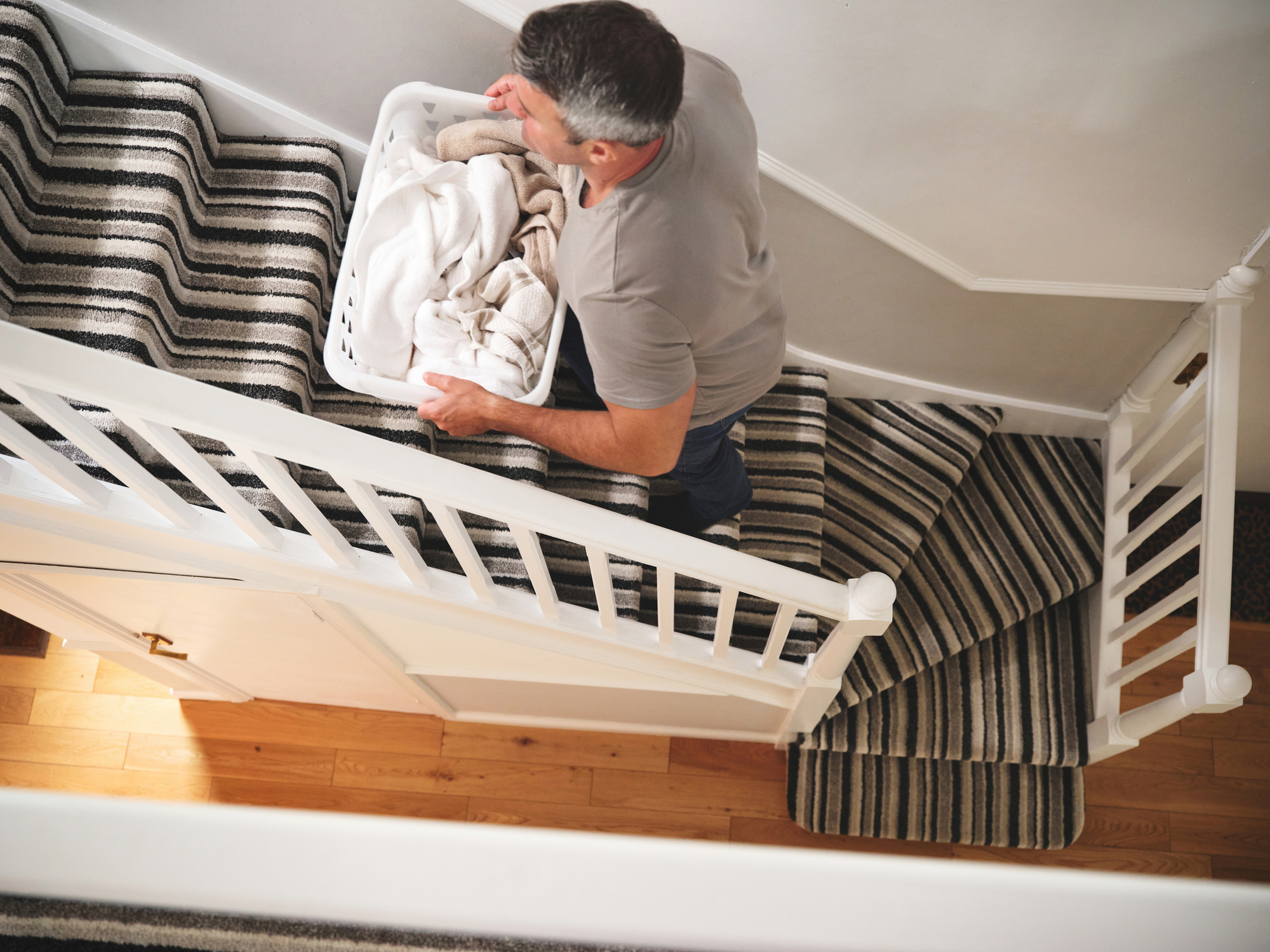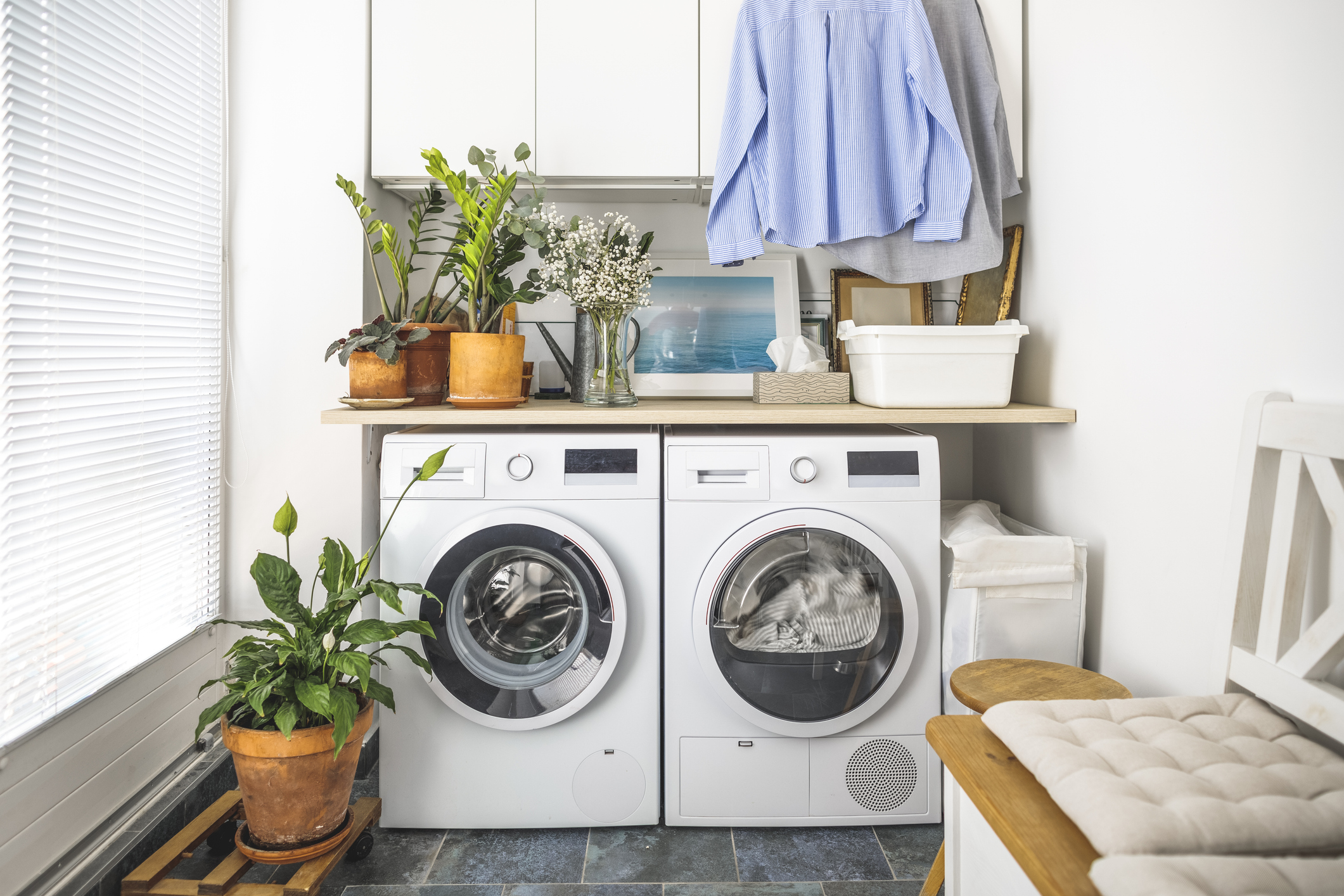

We may earn revenue from the products available on this page and participate in affiliate programs. Learn More ›
While some people dread doing laundry, it is actually Americans’ favorite household cleaning chore, according to the American Cleaning Institute. Some of that favorability might depend on the location of the laundry room in a home. Choosing the ideal spot can affect the experience of getting laundry done, such as how convenient, easily accessible, and user-friendly the task is.
New research shows preferences for the best location for a laundry room, but there is a bit of a disconnect between what various surveys have found and what the experts we spoke to prefer for their clients. Learn more about this new research, what experts are seeing on the ground, and the pros and cons of laundry room locations so you can decide what works best for you, if you are purchasing a new home or considering a laundry room remodel project.

Builders and buyers agree on the first floor as best for the laundry room, with some variation.
Most (72 percent) of the homes built in 2023 had laundry rooms on the first floor, according to the U.S. Census Bureau’s new Survey of Construction. Just over 25 percent of new homes featured laundry rooms on the second floor, and less than 1 percent had laundry rooms located in the garage, basement, or other spot.
However, the National Association of Home Builders’ What Home Buyers Really Want report paints a slightly different picture. Sixty percent of the home buyers surveyed said they prefer their laundry room on the first floor, while only 7 percent like to do laundry on the second floor of their home. The basement was the second most popular option at 17 percent and the garage was third on the list at 15 percent.
This comparison highlights a slight disconnect between what builders are offering and what buyers want. While builders are largely designing laundry rooms on the first floor, many buyers prefer their laundry room in the basement or garage. Yet, many of the real estate and home design experts we spoke to highlighted the benefits of laundry rooms on the second floor.
Personal preference might matter more than the research indicates.
The most convenient and effective laundry room location depends on the specific needs of the homeowner, says Ryan Fitzgerald, real estate expert and owner of Raleigh Realty in Cary, North Carolina. “I believe the best location for a laundry room is one that fits seamlessly into the homeowner’s daily routine. As a realtor, I always advise my clients to think about their lifestyle and daily habits when making this decision. It’s not just about convenience; it’s about creating a home that works efficiently for them,” says Fitzgerald.
There are also regional differences regarding the best spot for a laundry room. According to the Census survey, the first floor was the most prevalent across every geographic location but ranged from 91 percent in the west-south central area of the country to 59 percent in the South Atlantic region.
Second-floor laundry rooms were most common in the Pacific region at 43 percent but were least popular in the west-south central region at 8 percent. The west-north central area of the country had the highest share of homes with the laundry room in the basement, at 13 percent. None of the regions had more than 2 percent of homes with laundry rooms located in the garage.

Some make the case for first-floor laundry rooms.
Based on his extensive experience working with clients, Fitzgerald has found that a first-floor laundry room often strikes the best balance between convenience and functionality. “In my opinion, a first-floor laundry room offers several advantages,” he says. “I’ve noticed that it allows homeowners to multitask more effectively. They can throw in a load of laundry while preparing dinner or keeping an eye on the kids. It’s also easily accessible without having to climb stairs, which is a significant benefit for older homeowners or those with mobility issues,” he says.
A laundry room on the first floor can be more desirable and practical for those with an active outdoor lifestyle, says Suzy Minken, a realtor with Compass in Short Hills, New Jersey. “Clothes that are muddy would be best put into the laundry room as quickly as possible,” she says. “Similarly, if clothes are wet because of the rain or snow, most homeowners would want them expedited to the laundry room. And for all the gardeners, hikers, and pool/beach goers, a first-floor laundry room may be preferable,” she adds.

The best spots for first-floor laundry rooms are in the mudroom and in or next to the kitchen. Placing mudrooms by the main entry or garage is a great idea for a companion laundry room since they are the perfect place to drop off wet and dirty clothing before tracking dirt and grime into the home.
Locating the washer and dryer either inside the kitchen, such as by designing a combo pantry/laundry room, or next to the kitchen is extremely convenient. This allows easy drop-off of kitchen towels and linens for washing and helps residents multitask, such as doing laundry while cooking dinner or while sitting down to a meal.
Second-floor laundry rooms might be a better option for some lifestyles.
Placing laundry rooms on the second floor near the bedrooms makes doing this chore much easier since family members store the bulk of dirty laundry upstairs in their bedrooms. Donna Roses, home organizer at Donna Declutter LLC in Santa Rosa, California., recommends having “laundry rooms on the same floor as the bedrooms, especially in a split-level home, so residents don’t have to carry loads of laundry up and down several flights of stairs.” There might be a closet on the second floor, for example, to turn into a laundry room.
As an experienced property manager, Daniel Rivera with Proactive Property Management in New Jersey has found the most convenient and effective place for a laundry room is on the same level as the bedrooms. “In my experience managing properties, homes with laundry rooms on the bedroom level have higher tenant satisfaction and retention rates. For example, one landlord client had a 5-percent higher renewal rate after we suggested moving the laundry from the basement to the second floor where the bedrooms were located,” he says.
There are a few key points to keep in mind with second-floor laundry rooms. “Laundry rooms on upper levels do require proper ventilation and moisture control to prevent damage,” says Rivera. Anyone considering renovations to relocate the laundry room to the second floor will need to have new washer and dryer hookups and pipes installed, which can get pricey. Also, Roses warns, “if someone likes to do laundry at night, they might prefer to have the machines farther away from their sleeping spaces so they don’t hear the noise.”

Consider other options.
Some experts believe that two laundry rooms are better than one for large homes. “The ideal situation is to have two laundry rooms—one on the living floor and one on the sleeping floor,” says Diana Melichar, architect and president of Melichar Architects in Lake Forest, Illinois. “That’s a true luxury. Then messy outdoor items can be cleaned near their point of entry into the house and bedding and everyday clothing can be laundered near their source and conveniently relocated in bedroom closets and beds,” says Melichar.
As revealed in the survey findings, some people like to do laundry in the basement so it’s away from the main living space. However, it can be challenging to carry heavy baskets full of laundry up and down steps to and from the basement. Also, laundry can get musty if left in a dark, moist basement.
Some homeowners might opt to locate their washer and dryer in the garage to keep laundry completely out of the living space. It helps minimize noise while machines run, but garages tend to be dirty and smelly from vehicle exhaust, which could end up tainting clean clothes. Also, depending on where you live, it could get hot, humid, or chilly in the garage, making it uncomfortable to wash and fold laundry in that space.
